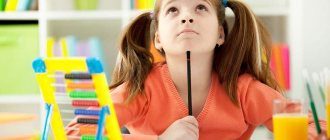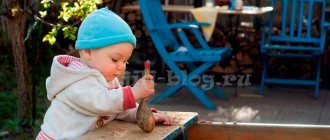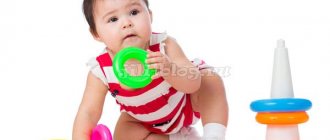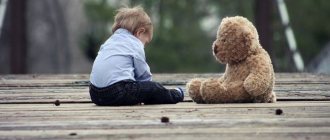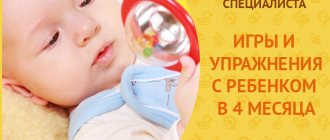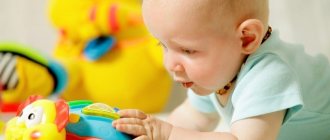Articulation exercises
One of the very first and very useful articulation exercises that a one-year-old baby can handle is blowing. Tasya learned to blow at the age of 1 year 3 months, a candle helped us with this. As soon as we got used to the candle, we began to be able to blow into a pipe and blow soap bubbles. So, how can you master the blowing skill:
- Blow out the candle;
- Blow a pipe;
- Blow through a straw into a glass of water to make the water gurgle;
- Blow soap bubbles;
- Blow on a paper butterfly tied to a string to make it fly;
- Blow off small pieces of paper placed on a plate.
Here are some other articulation exercises you can practice (from about 1.5 years old, some things may work out even earlier):
- "Hide and seek." First we show our tongue - stick it out as far as possible, then hide it, repeat this several times.
- "Watch." Move the tongue from side to side - left and right.
- "House". We declare that the baby’s mouth is home. The mother gently taps her finger on the cheek: “Knock, knock,” and the baby’s mouth opens. We say: “Bye! Bye!” and his mouth closes.
- "Yummy". We open our mouth slightly and lick ourselves: first we run our tongue along the upper lip, then along the lower lip.
- "Balloon". We puff out our cheeks and burst them with our fingers;
- "Fence". We show our teeth (“bar our teeth”) and say that the tongue is hidden behind the fence.
- “Brushing our teeth.” We show the teeth again, then with the tip of the tongue we slide first along the upper teeth, then along the lower ones.
- "Horse". We “clop” our tongues like horses.
- “They made a mistake.” We stand together in front of the mirror and begin to express ourselves: smile widely, frown, stretch out our lips.
What should a 3-year-old child say?
The speech of a three-year-old child continues to actively develop. Closer to the age of four, many children already begin to draw conclusions and reason about the phenomena and objects around them. The baby is interested in communicating with family and strangers.
Many parents want to know what the child’s speech rate is at 3 years old. We must understand that all children are individual in their development. Children of the same age can be at different levels of development of speech abilities.
As a rule, by the end of three years, children come with the following achievements:
- pronunciation of words improves significantly. Speech becomes clearer;
- the baby knows the names of almost all the objects around him (shoes, furniture, clothes, interior parts, toys);
- The child can coordinate words by cases, genders, and numbers. True, he doesn’t always get it right;
- in speech there is an increase in the number of adverbs, prepositions, adjectives, pronouns;
- The baby can memorize short fairy tales and poems and retell them.
If there are no deviations in the child’s development, then he will strive to establish contacts with adults and peers through communication.
There are norms for speech development at three years. The pediatrician takes them into account during the examination of the little patient. The doctor evaluates sound pronunciation, sentence coherence, and vocabulary.
Sound pronunciation
As the child grows, his articulatory apparatus improves. At the age of three, the movements of the tongue, lower jaw and lips become more precise and coordinated.
Thanks to the strengthened tongue, the baby is able to correctly pronounce consonant sounds that were previously softened. Speech becomes more understandable to strangers. For example, if previously a child pronounced “syadik”, “malyako”, now he pronounces these words correctly.
Words with combinations of two consonants (bottle, class, bread), as well as those consisting of 3-5 syllables, begin to come easier.
At the age of three, the following problems with sound pronunciation are often observed:
- replacing hissing sounds with whistling sounds. For example, instead of “hat” the baby says “sapka”, “knife” - “nozik”;
- There are no sounds “r”, “l” in speech. Often children replace them with “v”, “y”, softening the “l”: “fish” is pronounced “liba”, “spoon” - “leader”, “boat” - “yodka”;
- the sounds “ch” and “ts” are not pronounced clearly. For example, the baby says not “chicken”, but “tsyplenok”, not “prince”, but “prints”, not “tea”, but “tai”.
Lexicon
If by the age of three he knew about a thousand words, then closer to the age of four this number increases to 2000.
Children love to play with words, rhyme and change them, and come up with combinations of sounds (for example, “plam, slam, glam, tlyam,” “milk, far, coloko, grind”). Words that are too long are not pronounced correctly. For example, a child can pronounce “electricity” “petalism”, and instead of “bicycle” - “lisipede”.
There are often cases when children rearrange sounds and syllables, saying not “store”, but “gamazin”, not “first”, but “first”. There are certain difficulties when pronouncing two consecutive consonant sounds: children insert a vowel between them or do not pronounce one consonant. At three years old, children can distinguish objects that are similar in appearance: tiger-lion, mug-cup. They know the names of many animals and can show them in a picture.
When learning new words, three-year-old children establish semantic connections between actions, objects and their names. They also begin to treat the vocabulary of their native language more meaningfully. At the same time, the speech of children at three years old is still imperfect. They often lack words to retell memorable events or long tales.
Connectivity of words and sentences
Three-year-old children do not yet know how to coherently and logically talk about what they saw and what aroused their interest. Difficulties arise with retelling the content of a work of art.
The boys still can’t manage a monologue on a given topic without using leading questions. The statements of three-year-old children are not expanded. Their phrases are simple and often incoherent.
They cannot compose a long, meaningful story from a picture. Instead, they list the objects and actions of the characters seen in the image, while three-year-old children remember and recite nursery rhymes that are understandable and simple in content.
Children at 3 years old are able to retell almost word for word a short fairy tale that they have heard several times. At the same time, some words may be completely incomprehensible to them (for example, tar barrel, bast hut).
Speech development: basic rules for communicating with a child under three years old
Let's start with the key rules that will help find answers to the main parental questions: “How to help a child talk?”, “How should I speak so that he understands me?”, “What to talk to him about?” and so on.
We motivate to communicate
The child needs to be motivated for speech development . If you just beg: “Tell dad,” then nothing will come of it; he’s not very interested in it, because there’s no motive. This needs to be done in the format of a game; it is important that it is interesting to him.
Joint games are an effective format for children to learn new knowledge and skills
For example, dad is hiding, and the baby and mom are looking for him. At the same time, mom can loudly call dad: “Dad, where are you?” Then the child will be more willing to say this word. Dad can also shout “ku-ku”, in which case you can search for him by ear. Agree, this is much more interesting than simply repeating words.
We encourage the child's speech expression
Encourage your baby for any speech manifestations . Let this be an incomplete word, a part of it, or even an onomatopoeia. If, upon seeing a dog in the picture, he says “ka” or “av”, praise him, do not correct him at first.
We are interested in what was said
Show interest in your child's speech , even if it is not yet very clear. Try to repeat what he said. Let it be an incoherent set of sounds. And if you can’t repeat it, smile and ask: “Really?” Don't forget to act surprised.
We exclude the words “say” and “repeat” from speech
Try not to use these two words , first of all, in a situation where guests come. It is physically difficult for a child to say anything; he feels unsure of himself. And you ask to do this in public. Then the baby simply withdraws, and the desire for speech reactions disappears completely. These words should be replaced with the questions “What is this?”, “Who is this?” . In this case, you can first answer yourself. Then pause. Give your child time to say everything himself.
Speak clearly, loudly and at a measured pace
This way you create the opportunity for your baby to understand your speech . When an adult “jabbers” and does not highlight words that are meaningful in their intonation, it is difficult for a child to perceive what is said. To him it's all just background noise. In a situation where one of the parents or loved ones does not speak loudly enough, the child has to strain his ears and listen. He may not hear the entire word, which means he is unlikely to be able to reproduce and understand it correctly.
Let's just say
Do not overload your child with complex vocabulary . For example, he is unlikely to be able to pronounce words such as “motorcyclist”, “policeman”, “excavator”, even in a very interesting game.
We speak correctly
For a child, the speech of loved ones is a model . Remember this the next time you want to “lisp” with your baby. Don't distort your speech .
We pronounce words with pleasure
Be emotional in conversation . Highlight the words, stretch them out. Then the baby will listen and be curious about what you say.
We discuss what surrounds us
We are talking about what we see right now , at this particular moment. There is no point in remembering the dog you saw in the yard yesterday. It’s better to talk about what you are playing with your baby at the moment, discuss what he will eat for lunch, etc.
Voice actions
For example: “Dad is sleeping: shh-sh-sh!”, “Kisa is drinking milk!”, “Vanya is eating porridge! Am-am! So tasty!". If the baby points to the car, say: “Car! The car is moving: beep!
But still, don’t overdo it! No need to talk non-stop . It is difficult to perceive speech if you hear it constantly. Remember your friend who never stops talking. Now imagine that she is with you every day from morning to evening. After some time, you will definitely stop perceiving it.
By following these simple basic rules, you can encourage your child to communicate, teach him to hear and perceive the speech of loved ones . It may be difficult to adjust at first, but over time, talking to your baby “according to the rules” will become a habit.
Articulation gymnastics and pronunciation training
Do special gymnastics for your child’s speech apparatus every day. It’s best to start your next lesson with it. It will prepare the muscles, ligaments, tongue and lips for pronouncing sounds that are difficult for a preschooler.
Gymnastics is aimed at training the chewing, swallowing and facial muscles; they are the ones who jointly participate in the pronunciation process, making speech legible and understandable.
The pronunciation process involves not only the lips and tongue, but also the respiratory organs, chest, shoulders, and vocal cords. Take this into account when performing gymnastics and try to use all components of voice formation equally.
First, parents will have to master all the exercises on their own in order to be able to show the preschooler and achieve clear and clean performance. To develop lips, it is worth doing simple exercises, such as holding your lips in a smile, while keeping your teeth completely closed.
You should start with 30 seconds and gradually hold the smile for 1-2 minutes. Folding the lips into a tube also effectively develops articulation. The principle is the same - at first the tube from the lips should be held for 20-30 seconds, but gradually the duration of the exercise increases.
It will be a little more difficult to fold your lips into a donut, while the teeth close tightly, and the lips are stretched out like a tube, but open, so you can see the teeth. Gradually, the tasks become more complicated and movement is added, which should give mobility to the lips. So, the lips in the tube can be moved in a circle, left and right, up and down, depicting an elephant’s trunk or a pig’s snout.
Elongated lips, folded like a fish, close and open. This results in an entertaining conversation between fish at the bottom of the sea. And if you exhale through your mouth, causing your lips to vibrate from the air flow, you will get a very funny angry horse that snorts just like a real one.
A very fun game will help strengthen a child’s lips, in which the child needs to draw something in the air with a pencil held between his lips. The adult’s task is to guess what the child has depicted.
To train your cheeks, you can play with balloons, inflating your cheeks and holding them in this state for as long as possible. At the same time, you can make funny faces. If you inflate the right and then the left cheek in turn, you will get a hamster, and if you pull both cheeks inside the mouth and hold them in this position, you will get a hungry and funny gopher.
You can practice your tongue by pretending to be a dog. To do this, stick out the tongue and place it relaxed on the lower lip. You can combine this exercise with short inhalations and exhalations through your mouth. If you stick out the tense tip of your tongue, you can play mosquitoes, and moving your tongue up and down and left and right, as well as bending it into a tube will help you not only enjoy spending five minutes of free time, but also train your tongue muscles.
Jaw training can be a pleasure if the baby, together with his mother, tries to imitate a monkey, “hanging” his jaw down as much as possible, or an angry lion, straining his lower jaw in a grin and emitting a characteristic growl.
Articulation gymnastics for stuttering
Stuttering is a speech problem that is sometimes difficult to treat. Success can only be achieved through daily training.
Articulatory gymnastics for stuttering is one of the best, because it is aimed at strengthening the muscles of the articulatory apparatus.
Examples of exercises:
- inflate your cheeks, release air, inflate each cheek in turn;
- clap your lips together (like a fish);
- press your tongue on one or the other cheek in turn;
- puff out your cheeks while closing your mouth, then hit your cheeks with your fists to release the air noisily;
- bite the upper and then the lower lip.
The age of early development (2-3 years) is a short, but truly unique period of life, when the child’s brain is programmed for intensive formation and learning. Parents should pay special attention to the child, because it is at this time that the foundation is laid for the development of the baby’s speech and thinking.
Games and exercises for the development of impressive and expressive speech
Work on correcting SRD is built in stages, according to the principle “from simple to complex.” Thus, classes aimed at expressive speech begin with pronouncing sounds, then syllables, simple words, and only after the previous stages have been worked out do they move on to phrases and sentences.
It is very useful for mental retardation to combine such activities with physical exercise. This will help develop motor skills and learn the material faster.
For example: a game aimed at learning vowel sounds in RRD. Children usually play this game with pleasure. Vowel sounds must be sung, combined with smooth hand movements.
Technique for performing the lesson:
- “aaa” - arms spread wide apart;
- “uuu” - smoothly bring your arms straight in front of you;
- “oooh” - wide to the sides and up, bring your hands together above your head;
- “iii” - to the sides, down;
- “yyy” - squat down, arms bent, pressed to the body;
- “uh” - movement of the arms to the sides, down.
The next step is to study the consonants “d”, “b”, “m”, “p”. After the vowels and these four consonant sounds are mastered, you can begin to study hissing sounds and sonorant “r”, “l”.
With mental retardation, work on vocabulary (active and passive) should always occur: while doing household chores, taking a walk, or performing daily hygiene procedures. At the same time, patience and calm are required from parents. You cannot rush the baby or use the phrases: “Say”, “Repeat”. Such pressure can negate all the work to overcome the SRR and further aggravate the situation.
Logorhythmics
Such activities help children not only master speech, but also expand their vocabulary.
Speech therapy rhythms develop a child’s motor skills, speech, thinking, memory, and attention. Exercises are given to children from two years old
When your child speaks poorly, let him repeat only what he remembers. If he does not speak at all, then the adult sings, and at this time the child’s hearing develops and his speech reserve is replenished.
Speech therapy classes for children 2-3 years old are interesting and exciting. When you start singing and doing the exercise, the child will become interested, and he will involuntarily begin to repeat after you. There are several exciting games:
"For a walk". You need to read aloud a verse to which the baby repeats certain movements:
Our legs (stretches palms to legs)
walk along the path (slaps hands on knees).
Over bumps, and over bumps (moves in slow steps)
all the flowers step over (raises his legs high).
- Game "Weather". The child sits on a high chair and listens to slow music. When you say, “It’s raining,” he pats his knees with his palms in rhythm. Hearing the words: “Lightning has appeared,” the baby rings the bell. When you said: “Thunder is thundering,” the child stomps his feet loudly. When the word “silence” is said, the baby becomes silent and sits motionless for a minute.
- Do exercises, saying: “First, we raise our handles “one-two-three”, then we lower our handles. We'll stomp our feet, clap our hands, jump, run, and we'll finish our exercises. And we will begin to walk quietly again.”
These are interesting speech therapy classes for children 2-3 years old. Exercises should be carried out only with musical accompaniment. Then the child will really like such activities, and he will please you with his successes.
Book material for classes
The main features of a good book for a 2-3 year old child:
- High quality illustrations.
High-quality images attract the child and do not move his attention beyond the boundaries of the picture. In high-quality publications, the drawings are usually bright, clear, “spacious” (on a light background, for better visual perception of the child), realistic, and the images of the characters’ bodies are proportional. High-quality illustrations develop the baby’s aesthetic taste. Communication with a book for a child is the first acquaintance with the world of art.
- Conciseness of the text.
At 2-3 years old, children cannot yet listen to long fairy tales, so short rhythmic works (poems, songs, ditties, counting rhymes, riddles) and short stories and fairy tales are the best choice for children.
List of books for young children:
1. Russian folk tales (“Turnip”, “Teremok”, “Kolobok”, “Ryaba Hen”). Promotes the development of logical thinking. For example, in the fairy tale “Turnip”, the child remembers the characters in the order in which the heroes pulled the turnip - an excellent exercise for developing memory and logic.
2. Poems. Popular authors:
- A. Barto (collection “Toys”);
- K. Chukovsky (“Fairy Tales”);
- S. Marshak (“Poems and Fairy Tales”);
- lively, lively and humorous collections of poems by I. Tokmakova “Where the Fish Sleeps”, “The Sun Walks in a Circle”;
- unusual, with non-standard rhymes, poems by G. Sapgir “Wonder Forests”;
- S. Mikhalkov (“The Most Favorite Fairy Tales and Poems for Kids”) is known for his ability to tell children about their mischief and disobedience in a light, humorous manner.
3. Fairy tales of Russian authors - V. Suteev, “Fairy tales and pictures” (with the author’s own illustrations).
4. Fairy tales of foreign writers. A prominent representative is D. Donaldson. The most famous works are the fairy tale “The Gruffalo” (about a little mouse who was able to outwit the terrible monster Gruffalo), “The Gruffalo’s Little Daughter” (the book clearly traces a useful idea - you should not go far without asking your parents, it can be dangerous).
5. Educational books - help children learn to draw, glue, and sculpt.
Speech therapy tasks
Starting with the letter R
One of the most difficult sounds to master is R. Many preschoolers learn to roar loudly by the very end of kindergarten. If the production of the sound P is already behind you, then special exercises will help speed up its automation:
1. “Like a little motor”
We ask the child to pronounce the sound R in the word for a long time, drawlingly (like a motor growls).
2. “Where is R hiding?” (in pictures and words)
Offer to choose pictures with images of objects with a given sound or clap your hands if he hears such a word.
3. “How can you growl?”
Show your child pictures of objects that have the sound r in their names. Offer to read and color the picture.
4. “Sounding tracks”
Together with your child, come up with several chants made up of several syllables:
Ra-ra-ra - they ran away from the yard.
Ro-ro-ro - and they found a bucket.
Ru-ru-ru - we came up with a game.
5. “Substitute a syllable”
The adult offers the child words that end or begin with a syllable with P (ra, ro, ry), the child must choose the correct option and pronounce it correctly.
6. “Look and name”
An adult asks the child to read words with the letter r from the pictures. The word must be said as many times as there are stars next to each picture.
7. “Poems, tongue twisters, riddles”
Learn with your child several poems and riddles in which words with R appear.
Starting with the letter L
The hard sound L is also often difficult for children 5-6 years old. If the baby has already learned to pronounce it alone, in isolation, then it’s time to start working on automation in speech. The following exercises are suitable for this:
1. “Say it nicely”
Offer your child several images of words starting with L. Ask him to pronounce the words beautifully, emphasizing the desired sound with his voice.
2. “Toys for Larisa”
Ask your child to collect gifts for the Larisa doll. Tell her that she only likes things that begin with L. For this exercise, you need to select small objects or pictures in advance; all words should not begin only with L.
3. “One-many”
Invite your child to name words with L in the singular and plural. In the workbook for the sound L (author Kostyuk A.V.) there is a whole table with pictures for this exercise (lesson 20).
4. “Find the Sound”
Invite your child to draw up a diagram of the word and mark the place L on it. If it is still difficult for your child to independently determine the number of sounds, then first you can do several similar exercises from the workbook.
5. “Tongue twisters and nursery rhymes”
Use nursery rhymes, tongue twisters and poems with words that contain L.
Starting with the letter Sh
Difficulties with hissing in children 5-6 years old are also quite common. The following games are suitable for automation:
1. “Who’s hissing?”
Invite your child to choose several pictures of those who can hiss. Ask them to say their “song” clearly, loudly, and for a long time.
2. “Catch the Sound”
Ask your child to clap their hands every time you say Sh or a word with that sound (among others).
3. “Syllables Travel”
Take a card with one of the syllables SHA, SHO, SHU. Offer to come up with words or several that begin with this syllable and end with it (Sha-ry and ka-Sha, sho-rokh and ho-ro-sho).
4. “What are the guys’ names?”
Ask your child to read the children's names, adding the syllable SHA at the end.
4. “We compose speech therapy rhymes”
Come up with short rhythmic chants with the syllables SHA, SHO, SHU, SHI.
Sha-sha-sha - the porridge ran away,
Sho-sho-sho - have a good rest,
Shu-shu-shu - dry mushrooms and berries.
5. “Speak beautifully and correctly”
Ask your child to pronounce words with the Sh sound correctly.
The use of workbooks not only allows you to properly organize speech development classes for children 5-6 years old, but also makes it possible to train graphic skills, attention, thinking, and imagination. To reinforce the material, also use video lessons:
To reinforce the material, also use video lessons:
How specialists work: exercises, games, manuals
One of the most obvious reasons for the incorrect pronunciation of sounds by young children is the imperfection of their speech apparatus. Speech therapy gymnastics helps solve this problem.
There are many fun exercises that children enjoy doing in front of the mirror, repeating after the speech therapist.
- “Window” is the simplest exercise in which the baby must first open his mouth as wide as possible (“it’s hot, open the window!”), and then close it (“it’s cold!”).
- “Brushing your teeth” - the child needs to smile and in this state open his mouth slightly, then run his tongue over the upper and lower teeth, as if with a toothbrush.
- “Cup” - open your mouth again in a smile, stick your tongue out further and give it the shape of a bowl, raising the tip and edges.
- “Fipe” - diligently stretch out your lips, as if with the intention of whistling, while clenching your teeth.
- “Painting the ceiling” - smile, open your mouth slightly and move the tip of your tongue across the sky, as if painting it with a brush.
Children like this kind of gymnastics for the tongue, but it quickly tires them. At the next stage of the lesson, you can move directly to oral speech. Various descriptive games will help with this. For example, the teacher takes out an object or toy from a bag or box and asks the child to name it. Then he asks about the properties and characteristics of the object, pushing the child to describe it (the ball is round, green, small, bouncy). If successful, you can complicate the game: ask the child to put his hand into a bag with a toy and try to tell what it feels like.
The teaching aids include pipes and turntables for breathing exercises, finger toys and exercise machines, sets with tweezers for grasping small parts, tactile bags and boards - there is a very wide choice for professional speech therapists. You can purchase such things for home use, or you can make do with improvised means.
What activities can be done with your child at home for speech development?
It's no secret that children spend most of their time at home.
Note! Therefore, it is so important to properly organize the baby’s activities aimed at developing children’s speech.
Articulation gymnastics and pronunciation training
Basically, all speech therapy classes for children 3-4 years old begin with small gymnastics for the organs of articulation. Most popular:
- Smile - stretch your lips in a smile, showing your teeth (the same without teeth).
- Dudochka - fold your lips into a tube and stretch them forward.
- Balloon - inflate your cheeks and hold the air for 3-5 seconds.
- Shoulder blade - place your tongue outstretched on the lower lip and fix it.
- Needle - tighten the tongue very much, make it as thin as possible and pull it forward, fix it.
- Jam - lick your upper and lower lips with your tongue.
- Let's brush our teeth - run your tongue over the upper teeth, then over the lower ones.
- Hill - the tongue rests on the lower teeth, while the middle of it tends to the palate, forming a hill. With this training, the child remembers the position of the tongue used to pronounce many sounds.
Games for hearing development
Children of primary preschool age are offered games to distinguish the volume of a sound or recognize an object that makes a sound. For many speech therapy tasks offered to children 3-4 years old, musical instruments such as pipes, drums, and piano are used.
Also at this age it is already possible to teach a child to distinguish sounds by ear. This can be done by offering a game: “Clap your hands when you hear the song of the water (sound “S”): sleep, frame, braid, mom, Sasha, etc.”
Causes, diagnosis and clinical picture of mental retardation in ICD 10 coding in children
Important! It is best to call sounds by special “names”: the sound “S” is the song of the water, the sound “Sh” is the hiss of a snake, etc. It will be easier for the child to remember and orientate himself. When pronouncing a word in which the baby must highlight the sound, it should be exaggerated.
Finger gymnastics
This gymnastics is used as an activity for the development of speech for 4 years at home and in preschool educational institutions. By this age, the baby understands simple instructions and is able to follow them, and children's fine motor skills are already sufficiently developed to make small “compositions” from their fingers. Here are some of them:
- Lock - hands are tightly clasped in a lock, with the fingers of both hands intertwined with each other.
- Scratching - alternately depict “paws” with your right and left hands.
- Let's warm up our hands by rubbing our left palm vigorously with our right palm.
- Glasses - make a circle with the thumb and index finger of each hand and bring it to your eyes - put on glasses.
Finger gymnastics develops speech
Poetry learning, reading and storytelling
Children 3-4 years old often learn poetry, retell fairy tales, and learn to read during speech therapy sessions at home. This is facilitated by numerous manuals and workbooks for younger preschoolers, which can be purchased at any children's store or printed from the Internet.
The best authors of children's fiction: Korney Chukovsky, Alexander Pushkin, Agnia Barto, Samuil Marshak. The main task of memorizing short poems and retellings of works is to enrich the child’s vocabulary, expand his fantasy and imagination.
Note! In 2021, Bardysheva T.Yu. and Monosova E.N. published a special manual aimed at the comprehensive speech development of children of primary preschool age. The notebook by Monosova and Bardysheva consists of 120 pages of high-quality exercises and games that help increase the child’s active and passive vocabulary, develop phonemic awareness and coherent speech, and improve the processes of thinking, attention and memory. This manual was created both for professional speech therapists and defectologists, and for parents - it is written in simple and understandable language.
Classes on the formation of visual and sound perception
Hearing and vision play a huge role in shaping our understanding of the world. If for some reason the sound perception is impaired, it is difficult for the child to differentiate and recognize sounds. And, as a result, difficulties arise with speech.
Visual perception not only forms a picture of the surrounding world, but also lays the foundation for the development of logic. Specific visual images form an understanding of size, color, shape, teach how to compare them and combine them by similarity.
These are the basics of mental and speech development. It is not surprising that corrective home exercises for mental retardation should begin with games and exercises to develop these two areas.
Games and exercises for development of sound perception during mental development:
Exercise, game Description Guess The game requires preliminary preparation. You will need cards with images of animals or birds and the sounds of their voices. The adult plays recordings of animal calls in random order; the child must show who exactly is saying that. Imitation This may be the next most difficult version of the previous game or a separate exercise. The baby must imitate the sound that the specified animal makes
What does the cow say? What does the cat say? Gradually, the task can be complicated by asking him to imitate more complex sounds: a car horn, a creaking door, the clicking of heels. On a walk When walking around the city or park, be sure to draw the child’s attention to external sounds. Without seeing the source, the baby must learn to recognize them
In the future, when speech begins to form, you can discuss what you heard, compare what the sounds are like, and imitate them. Home orchestra A very fun game that all children, without exception, love. A preschooler and an adult choose any household objects with which they can make sounds. These can be lids, pans, tablespoons, jars with bulk products. The goal is to get as many different sounds as possible. You can experiment with rhythm, volume, tempo. Musical value does not matter; what is more important is that the baby learns to produce different sounds and recognize them. In the future, the task can be complicated: with his eyes closed, he must identify the sound of the object that sounded. Say what it sounds. For the game you will need 6-10 opaque jars or boxes and various small things (paper clips, cereals, buttons, beads). Two identical sets are prepared from these components. One for an adult, the second for a child. The adult takes his box and shakes it. Without opening it, the child should find the same box by the sound. Gradually the number of boxes should increase
Exercises for children with speech delay (SSD) to develop visual perception:
| Exercise, game | Description |
| Monochrome mosaic | To play the game you will need a regular mosaic. An adult thinks of a color, the child must assemble a drawing from parts of only this color. In the first stages, it is best to do this together, but not to complete the task instead of the baby. This same exercise will help develop fine motor skills. |
| Repeat | Materials: counting sticks, construction blocks. The adult lays out simple shapes from the elements of the construction set, and the child must repeat. Gradually, the adult makes figures more and more complex, from a larger number of elements (house, snowflake, man) |
| Find a pair | You will need cards of various subjects. The exercise is also good because it significantly enriches passive vocabulary. The adult offers the child several cards, the image on two of them has some common feature. At first it should be something obvious, later - less obvious. For example, two birds among the cards with animals. Or two inedible items among the food cards. |
| Labyrinth | The exercise teaches you to be attentive to details and purposefully move the direction of your gaze. This exciting game not only teaches attentiveness, but also develops the eye. Labyrinths or chains of interconnected objects (wires from appliances and sockets, strings with objects) can be found in children's books or on the Internet, or you can draw them yourself. The purpose of the exercise is to find out the final goal, to find a way out of the maze |
| Make a figure | A complex exercise that cannot be used at the beginning of work on correcting mental retardation. The child is offered a circled outline on a piece of cardboard, which he must fill in. Blocks, various cubes, or simply cardboard cut into unequal pieces can be used for filling. |
This is only a small part of the games and exercises that can be used to practice at home.
Sensory development
Sensory development is the child’s ideas about the external features of objects: their color, size, shape, taste, smell, etc.
A child of 2-3 years old is already able to name about 6 colors without errors, fold a pyramid, place figures of various shapes in the corresponding holes on the board, assemble a mosaic of 4 parts, draw lines within a sheet (long, short, round, vertical, horizontal ).
A necessary event for children. Helps to distinguish objects from each other through vision, touch, taste, and smell. Distinguish among themselves: large - small, long - short, thin - thick, narrow - wide, salty - sweet. In addition, studying colors. The most basic: red, blue, green, yellow.
It is very good to learn such things while walking. Examples include trees, sticks of different lengths, and grass. You can draw on the asphalt with chalk, making sure to let your heir try this innovation. Well, in apartment conditions, the sensory technique is used on the basis of special pictures. You can cut out cardboard strips with the desired characteristics and draw. Just look at household items.
What should the speech of a 3-4 year old child be like?
Scientists have calculated that at this age a child’s vocabulary ranges on average from 1,500 to 2,000 words. Such calculations are difficult to make at home, but there are several simpler indicators that can easily be used to determine how well a child’s speech development falls within the normal range.
There is no cause for concern if the child:
- actively tries to reproduce all the sounds and words he hears, especially those that are new to him;
- engages in word creation;
- makes simple sentences naming actions (the ball flies, the fish swims, the dog barks);
- tries to compose complex sentences and stories, but at the same time does not speak very clearly and makes many speech errors;
- can talk about himself in the third person;
- enjoys repeating many words after adults, quoting phrases from cartoons;
- does not pronounce all sounds; problems especially often arise with , , and ;
- rearranges letters and syllables in words;
- At the same time, he himself understands complex sentences, listens carefully to fairy tales, knows his favorites by heart;
- knows and knows how to say his first and last name, the names of relatives, friends, and the city in which he lives.
The listed signs apply to both boys and girls, although experts say that girls are ahead of boys in speech development by an average of 4-5 months. There are silent children who do not speak in front of strangers, but this does not always mean a deviation from the norm: a sensitive parent usually knows what his baby is really capable of.
Tests to determine pathologies
To quickly respond to changes in the baby’s development, you can conduct simple tests.
- By the fourth year, children can already distinguish the simplest geometric shapes. You need to ask the child to draw a circle. Even the similarity of this figure is a good result. However, if the child does not understand what is wanted from him, or his drawing does not even remotely resemble what is required, the test has not been passed.
- If a child does not show interest in new games and does not assemble a small tower from cubes, development is slow.
- By the age of three, the toddler communicates in short phrases (those who at this age already speak in long sentences are not taken into account). The minimum milestone for speech development by 3-4 years is the simplest phrases. If the child does not pronounce them, you should go to a specialist.
Formation of sound culture of speech in children
In what cases is it still necessary to contact a speech therapist:
- The baby does not respond to his name and does not understand simple requests.
- Shows no interest in new toys; all his game scenarios follow the pattern.
- He cannot assemble a simple turret or put a large bead on a rope.
- If by the age of three the child does not speak, there were injuries during pregnancy or early development, or there are hereditary diseases.
You should regularly conduct classes with children
Reasons for rejection
A child becomes non-verbal as a result of not only psychological disorders. The social environment plays an important role in the development of speech. If parents do not talk to the baby from birth, do not spend time together playing games, and the baby is left alone with himself in the sandbox during a walk, RDD may occur. It is more difficult to learn speaking if there is no communication with other children, people other than mom, dad, and grandmothers. It is easier to teach speech when the child enjoys playing together. If parents have chosen the wrong, uninteresting development program, the baby may be lazy to study and not be active.
Psychologists say that speech delay often occurs as a result of the child’s character traits, which is not a negative factor. Parents should not force a child who is shy and timid to speak. A one-year-old boy or girl can be sociable and active, play with other people and children, and upon reaching the age of two, become modest and unsociable. This is due to age characteristics, the crisis of 3 years of age, when the baby begins to divide adults into “us” and “strangers”. Heredity plays an important role. If mom or dad started speaking late, the child repeats the speech behavior of the parents in 70% of cases.
The provoking factor for the development of mental retardation is the lack of need for speaking. Moms and dads love to fulfill the child’s requests the first time, sometimes the baby doesn’t even say the wish, he points with his finger, “moos.” Parents guess what the baby needs without words and fulfill the request, which is wrong. The child lacks motivation to speak when he is already understood. If the baby points with his finger and does not want to speak, psychologists advise saying: “I don’t understand what you want, tell me,” more often to provoke situations that complicate the child’s activities without language.
Among the pathological causes of FGR are:
- Neurological disorders.
- Somatic pathologies.
How do classes with a specialist work and who needs one?
Almost every child aged 2 to 3 years needs a speech therapist. The need to practice special classes is due to the fact that at this time there is a certain language barrier between children and adults. Parents can help overcome it. But still, it is better to entrust this matter to a professional. In addition, classes are useful in developing children’s perception of the world around them. If it has been noticed that their child lags behind their peers in terms of speech development, this defect cannot be left to chance.
In properly organized and comfortable conditions, a speech therapist is able to find an approach to even the most difficult child. The assignments are always presented in an interesting way. Some modern specialists even include cartoons in their program, but exclusively aimed at working with speech impediments.
Regardless of what type of task is performed with the child, each of them has three goals:
- Teach a two to three year old child to repeat movements performed by an adult;
- Teach a three-year-old child to gesture correctly when communicating;
- Teach a two-year-old child to correctly reproduce heard sounds.
Each speech therapist will advise parents on activities that help consolidate acquired knowledge at home. To do this, repeat the material covered with your child, ask him to talk about what the classes were like, what he learned
It is very important at this moment not to interrupt the child and let him speak. It’s ideal if you find cartoons or programs with a speech therapy focus for home learning.
All material should be presented to children only in the form of a game, as this is done by a speech therapist. Only in this way will children not lose the desire to study further.
A professional speech therapist conducts classes no more than 20-30
You need to work with children at home carefully, do not overtire them
After this time, the child gets tired and his attention wanders.
Another important detail that not every specialist can handle is establishing emotional contact.
It is important for children that they show genuine interest in them, and they instantly spot any falsehood. In order for the classes to be as effective as possible, adults need to convince children that they are also interested in it.
A speech therapist’s full arsenal of activities for children aged 2 to 3 years includes: rhymes, chants, cartoons, drawing lessons, tongue twisters, logic exercises, memory development tasks. Let's look at the main and effective ones, which can easily be done at home.
Development of general imitation
General imitation is the copying of movements, actions, and facial expressions.
The child reproduces the movements he sees and successfully remembers them when repeated many times.
The mechanism of imitation works on a subconscious level in everyday life, and educators and speech therapists use it consciously when conducting classes with children.
It is important that the child is in the correct speech environment, i.e. it is better to limit communication with people who have speech defects. Watch your behavior - words should not contradict actions.
The development of general imitation begins with the repetition of elementary movements, then perform several actions simultaneously. The next stage is the implementation of a whole chain of actions that are logically connected and, as a rule, socially significant (for example, feeding a doll and putting it to bed).
When working with children, follow some rules: your sentences should be clear, simple and not too long; the speech of an adult is emotionally bright, calm, not loud.
General imitation games can be played with one child or with several (usually 3-5 children).
But! Keep in mind that when playing in a group, children imitate not only the adult, but also each other.
Games with general imitation
- Let's do exercises. The point of the game is to follow the adult’s commands (hands up, arms to the sides, jumping, clapping). To maintain interest and attention, invite the children to choose a leader from among themselves.
- Birds. Children play birds. An adult comments on every movement: “We fly like birds! Let's flap our wings up and down! Now the birds are pecking at the grains!” Gradually the pace of the game increases.
- Palms. A series of movements with the palms is performed:
“Palms up (put your palms on the table with the outer side down)!
Palms down (turn your palms over)!
And now put them on their sides (put our palms on their edges)!
And we clenched our fists (we clasp our palms into fists)!”
At first the movements are performed slowly, then faster and without the participation of an adult.
Home games for speech development
Speech therapy classes for children - targeted communication with the baby in a playful way.
All existing speech development exercises can be divided into 4 groups:
- finger games;
- articulation gymnastics;
- onomatopoeia and logorhythmics;
- games to expand a child's vocabulary.
Let's look at each category of exercises separately.
Finger games for speech development
Some of the most effective activities for speech development are exercises that involve the use of fine motor skills, since there is a close connection between the human limbs and the brain center responsible for pronunciation. In addition, such games are suitable for children with just developing speech, for example, at the age of 1 year.
Your child will definitely enjoy the following exercises:
- "Flower". In the initial position, form a bud from closed palms, fingers should be raised up, and wrists should be pressed tightly. After the plant blooms, the fingers spread in opposite directions. While doing the exercise, say: “The sun wakes up - the bud opens. The sun is tired - the flower is going to bed.”
- "Kitty." Algorithm of actions for speech development exercises: clench your fists and place them on the surface directly in front of you. Afterwards, you need to simultaneously open your palms and press them firmly to the table. During the process you need to say: “Fist - palm. I stomp like a cat." Repeat 3-5 times, varying the pace.
- "Hedgehog". The child will definitely enjoy this exercise. In the starting position, place your palms at a slight angle and interlace the fingers of both hands. In the process, move your fingers evenly and say: “Tiny cheerful hedgehog. How good are you?
- "The Bird and the Water" Children 5 years old are crazy about this exercise. Initially, you need to place your elbow on the table, raise your forearm and fold your fingers in a “pinch” - this will be a “beak”. When completing the task, lower your “beak” (elbow motionless) and touch the table. In the process, imitate the movements of the bird: take water, straighten your neck, swallow. Accompany the exercise with a tongue twister: “Bent over, picked up, picked up and swallowed.”
- "Chicks in the nest." Gather the fingers of your left hand into a “bunch” - these will be “chicks”. Make a ring with the fingers of your right hand - this will be a “nest”. Send the birds to the nest, taking turns changing hand positions. Add text accompaniment: “Here are the chicks, and here is the nest. The chicks are warm inside.”
Finger gymnastics with learning texts at home is an excellent alternative to regular visits to a speech therapist. Such games provoke the development of speech, teach the use of spatial imagination and develop reaction speed. After a short time, you will notice that the baby begins to remember texts better and speak more expressively.
Poems for speech development
Speech therapist classes for children 2-3 years old can be carried out by parents at home. If you practice with your baby every day, then he will start talking faster than you expect.
Poems are an integral part of speech development. It is important that there is a simple rhyme, then it will be more interesting for the child to practice:
- “There was a small fight in the river. Something was not shared between the two cancers.”
- “Our dear turtle always hides in her shell out of fear.”
- “Topotushki, topotushki, a bunny is jumping at the edge of the forest. He was tired and sat down and ate a carrot.”
Poems for children 2-3 years old are offered very small so that the child can easily remember them. When you see that the baby begins to recite small rhymes in full, then you can complicate the task.
Speech of a child at 2.5-3 years old
From 2.5 to 3 years, the child’s speech is characterized by the following:
- For each month during this half-year, about 50 new words are learned.
- Sentences consist of three to four words.
- Children at this age can state their full name, age and gender.
- In speech, pronouns are activated (I, you, he, she, they) and several words in the plural (cars, dogs, cats).
- A child between 2.5 and 3 years old is an enthusiastic observer, he imitates adults, and can even repeat word for word what his parents say during their conversation on the phone. It’s surprising that often children even hold the phone exactly the same way as mom or dad: they put their heads in the same position and talk with a similar intonation. This is explained by the fact that close adults represent the main model of behavior for them.
- Speech becomes clearer, more understandable and holistic.
- During this period, children often talk to themselves or to toys.
- An understanding of some simple prepositions (in, under, on) is formed.
- The child faithfully carries out simple tasks, so far only in stages.
- Correctly perceives simple temporal concepts such as yesterday and tomorrow.
- In early preschool age, children love to repeat the same fairy tales, listen to them, and ask questions. At this time, children still perceive everything “at face value” and identify themselves with the main characters.
- To the question “Who are you?” answers “I am a boy/girl,” that is, a definition of one’s gender appears.
- Questions are often answered starting with the word “where.”
Recommended exercises
For a specific child, an individual complex can be assigned, but among the basic tasks for children of the specified age, the following can be noted:
"Pipe". Ask the child to extend the sponge forward with a tube and hold it that way for as long as possible. To make the exercise more difficult, you can ask your child to do something like “doo-doo.”
"The Puppy and the Snake" Ask your child to show how a puppy breathes on a summer day - the tongue is flaccid, wide and spread across the lower lip. And then ask them to show how a snake does this - the tongue becomes mobile and “sharp.”
If certain sounds are defective, add exercises to improve the pronunciation of these particular “problem” sounds:
"Zoo". Show the card with a tiger and ask the baby how a tiger roars - “R-r-r.” Show pictures of those animals whose names contain a sound that is difficult for the baby and ask them to voice the name and show how the animal “talks”: to pronounce the sound “R” - tiger cub, badger, fish, giraffe, to practice the sound “L” - lion, husky, fox, dolphin, fallow deer, deer, lemur, with “W” and “F” - beetle, bumblebee, giraffe, foal, jackal, with “C” - dog, owl, elephant, fox, gopher.
"Pure talk." You can use various rhymes. The main requirement is repetition of the “problem” sound. If the pronunciation of “R” is unclear, for example, you can come up with something like: “Ra-ra-ru, ra-ra-ru, I’ll take a walk around the yard, ru-ru-ra, ru-ru-ra, now it’s time to go home!” " You can compose similar pure sayings yourself for any sound that the child is not very good at pronouncing.
